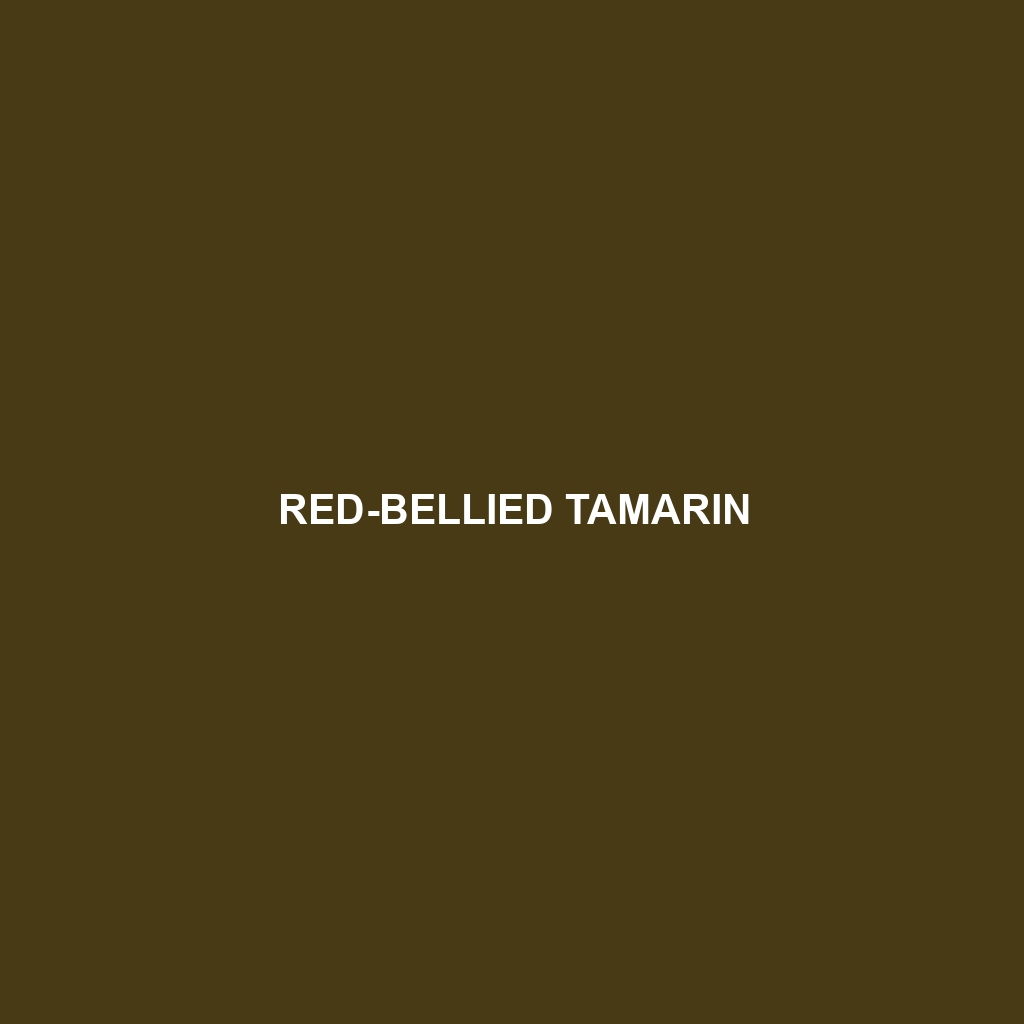Common Name: Red-bellied Tamarin
Scientific Name: Saguinus rubriventer
Habitat:
The Red-bellied Tamarin is primarily found in the tropical rainforests of South America. Its geographic range includes regions in Brazil, particularly the states of Bahia and Minas Gerais, and parts of western Guyana. This species thrives in both primary and secondary forests, where dense vegetation provides ample cover and abundant food sources.
Physical Characteristics:
The Red-bellied Tamarin is a small primate, typically weighing between 0.8 to 1.2 kg (1.8 to 2.6 lbs). It has a distinctive appearance, marked by a vibrant russet belly and rich brown fur on its back. This species has a relatively short snout, large expressive eyes, and a long tail that aids in balance during its arboreal lifestyle. The Red-bellied Tamarin also exhibits a notable tuft of white fur on its cheeks, contributing to its unique facial features.
Behavior:
The Red-bellied Tamarin is a social animal, often found in small family groups consisting of up to nine individuals. They are diurnal, meaning they are active during the day, and exhibit fascinating behaviors such as vocal communication, which includes a variety of whistles and trills. These primates are also known for their playful nature, engaging in grooming and social bonding activities, which strengthen group cohesion.
Diet:
This species is omnivorous, primarily feeding on fruits, insects, and small vertebrates. The Red-bellied Tamarin plays a crucial role in seed dispersal within its habitat, as fruits consumed may pass through its digestive system and germinate in new locations. This feeding behavior helps maintain the delicate balance of the rainforest ecosystem.
Reproduction:
The reproductive habits of the Red-bellied Tamarin are quite intriguing. Breeding typically occurs during the rainy season, with a gestation period of approximately 140 to 145 days. Females usually give birth to twins, which are cared for cooperatively by both parents and other group members. This social structure enhances the survival rates of the young, as multiple adults provide protection and care.
Conservation Status:
Currently, the Red-bellied Tamarin is classified as Vulnerable according to the IUCN Red List. Its populations are threatened primarily by habitat loss due to deforestation and human encroachment. Conservation efforts are crucial to protect this unique species and its rainforest habitat.
Interesting Facts:
One fascinating aspect of the Red-bellied Tamarin is its ability to use tools, such as sticks, to extract insects from tree bark. This behavior indicates a level of cognitive ability that is significant among primates. Additionally, these tamarins have intricate social structures and display a range of emotions similar to those seen in human societies.
Role in Ecosystem:
The Red-bellied Tamarin plays a vital role in its ecosystem as both a predator and prey species. By feeding on fruits and insects, it aids in maintaining plant diversity and controlling insect populations. Moreover, these tamarins serve as prey for larger predators, contributing to the food web dynamics within their habitat.
This SEO-optimized species description follows professional and formal writing standards, providing comprehensive information tailored for search engine visibility while remaining informative and engaging to readers.
